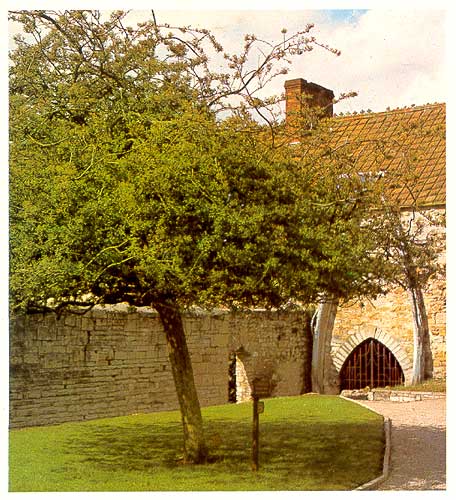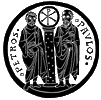The Flowering Hawthorn
by Hugh Ross Williamson
New York: Hawthorn Books, Inc., 1962,102 pages
Reviewed by Jeffrey G. Elias Dorrance, Cincinnati, Ohio
It has long been customary for the Anglican Bishop of Bath and Wells to present to the reigning English monarch, at Christmastide, blossoms from a thorn bush which has grown on Weary-all Hill [Wirrial Hill] in Glastonbury, according to Orthodox tradition, since St. Joseph of Arimathea was sent to England by the Holy Apostle Philip in the year of our Lord 63. When this custom was observed during the reign of King Charles I, the following dialog is reported to have taken place between him and the officer making the presentation:
"Well," said the king, "This is a miracle, isn't it?"
"Yes, Your Majesty, a miracle peculiar to England and regarded with great veneration by the [Roman] Catholics."
How?" said the king, "when this miracle opposes itself to the [Roman] pope? You bring me this miraculous branch on Christmas Day, Old Style. Does it always observe the Old Style, by which we English celebrate the Nativity, in its time of flowering?"
"Always."
"Then the pope and your miracle differ not a little, for he always celebrates Christmas Day ten days earlier by the calendar of the New Style, which has been ordained at Rome by papal orders for nearly a century" (p. 90).
As Hugh Ross Williamson, for many years an Anglican priest, had converted to Roman Catholicism in 1955, he tried to explain away this dialogue and to obfuscate Orthodox truth. On page 36, for example, he wrote, "December 25 was not celebrated as Christmas Day until well into the fourth century. Till then the date was -- as in the Eastern Church it still is -- January 6." But Orthodox truth shines clearly through the attempted obfuscation. December 25, as reckoned by the Julian calendar of the Roman Empire, is, as it always has been and always will be, the true date of the Nativity of Jesus Christ.
The Flowering Hawthorn is a fascinating history of Glastonbury Abbey from its founding by St. Joseph of Arimathea to its destruction by King Henry VIII. Along the way we learn about the miraculous Glastonbury Thorn and the many significant people who were closely connected with the Abbey: St. Collen, King Aviragus of Britain, King Ina of Wessex ("a direct ancestor of Queen Elizabeth II," says Williamson), St. Patrick the Enlightener of Ireland and his disciple St. Benen, St. Gildas the historian, St. David of Menevia, King Arthur of Britain, King Alfred the Great of Wessex, St. Alphage of Winchester, St. Dunstan of Canterbury, and Richard Whiting , the last abbot at Glastonbury. It was Whiting who was hanged, drawn, and quartered at Glastonbury at the age of 80 because he had written "in favor of Queen Catherine against the marriage of Queen Anne [to Henry VIII]."
When Orthodox Christians bend to reverence the icon of St. Joseph of Arimathea, they may notice that he holds a staff with hawthorn buds and blossoms at its top. And therein lies a tale, as we learn from Williamson's book. It seems that when St. Joseph arrived at Glastonbury on Christmas Day, a.d. 63, he "prayed for some miracle to convince [the unbelievers] of the truth of his words. As he struck his staff into the ground, his prayer was answered -- the staff immediately shot forth leaves and blossoms" (flyleaf). And so it happened every year at Glastonbury ever since. Mr. Williamson was an outstanding writer, besides being an accomplished historian, which makes every page of his book a joy to read. Besides obfuscating Orthodox truth in regard to the calendar, however, Williamson also neglected to annotate The Flowering Hawthorn or to provide a bibliography and an index. Maybe one day an historian will give us an Orthodox and properly annotated history of Glastonbury as well written as The Flowering Hawthorn.
Jeffrey G. Elias Dorrance, Cincinnati, Ohio
The winter flowering Thorn tree, or Glastonbury Thorn, is reputed to have come into existance after Joseph of Arimathaea's arrival at Glastonbury, to establish the first Christian Church in Britain.
It is said that he drove his staff into the earth on Wirrial Hill and it miraculously took root. It has since blossomed twice a year in Spring and at Christmas.
A branch of the tree is cut and sent to members of the Royal Family at Christmas each year.

